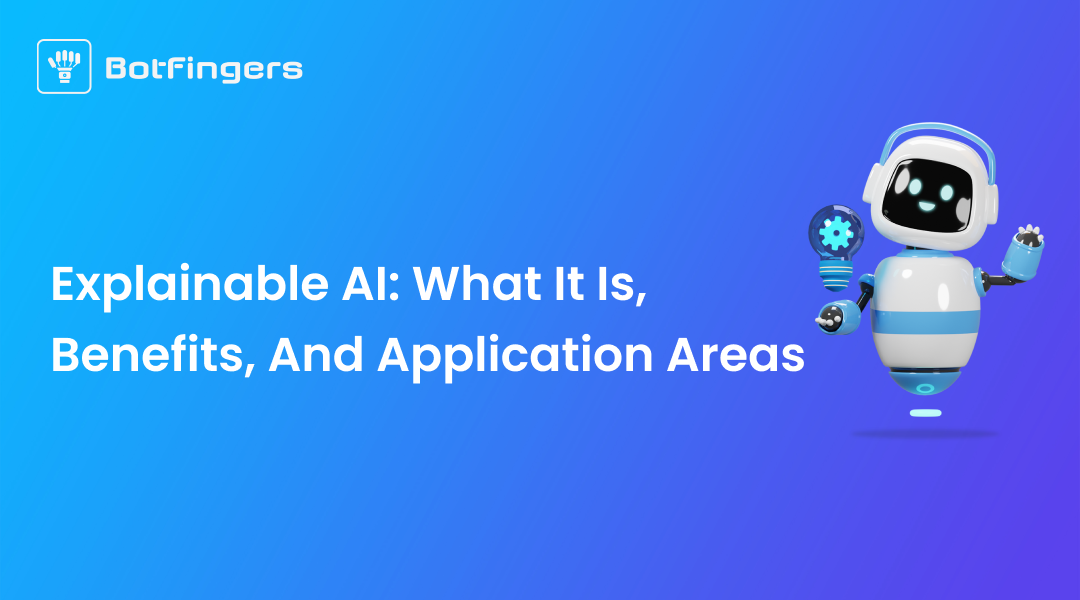The development and implementation of artificial intelligence systems that can provide clear explanations for their decisions and behaviors is called explainable AI (XAI). Transparency and interpretability are critical in an era when AI technologies are increasingly being integrated into all facets of our life. The ability to describe how AI systems get their findings increases trustworthiness and allows users to understand and confirm the decision-making process. This blog will look at Explainable AI, its benefits, and potential applications.
What is Explainable AI?
Explainable AI
seeks to alleviate the obscurity associated with traditional “black-box” AI algorithms. While black-box models can produce accurate results, they frequently need more transparency in terms of exposing how those findings are generated. XAI tries to find the underlying logic, causes, or traits that drive AI decisions, allowing humans to understand the decision-making process.
Explainable AI, instead of black-box models, which are difficult to explain, provide insights into decision-making. It enables users to comprehend the significance of various input features and uncover any biases or errors by tracing the rationale behind AI results.
To provide interpretability, explainable AI leverages a range of tools and strategies. This includes rule-based approaches, such as decision trees and decision rules, which provide a clear and simple framework. Furthermore, model-independent techniques like feature importance analysis, sensitivity analysis, and surrogate models aid in understanding and explaining the behavior of complex AI models.
Benefits of explainable AI
Explainable AI promotes openness by giving consumers insights into how AI systems make certain judgments. It delivers understandable and intuitive explanations, allowing consumers to trust and evaluate the results. This transparency boosts trust in AI technology and encourages its use in crucial fields.
It is critical to address ethical concerns about AI systems. It enables stakeholders to identify and correct biases, discrimination, or unfair practices ingrained in the decision-making process by offering clear reasons. XAI also improves accountability by allowing for the auditing and justification of AI judgments.
Explainable AI enables users to make better decisions. Users can assess the integrity and usefulness of the information presented by understanding the reasoning behind AI-generated insights. XAI also allows humans to intervene or amend AI decisions as needed, improving overall decision-making.
It is in line with the growing regulatory demands for transparency and accountability. In industries where AI is widely employed, such as finance, healthcare, and legal systems, XAI assists enterprises in meeting regulations, standards, and legal frameworks. It also aids in resolving potential legal disputes that may develop due to AI system choices.
Application areas of explainable AI
Medicine and Healthcare
Explainable AI has uses in healthcare, such as diagnostic systems that explain medical predictions or recommendations. It aids in treatment recommendations by assisting healthcare practitioners in comprehending the reasons behind AI-generated recommendations. Furthermore, XAI promotes personalized medicine by describing the aspects and qualities that go into personalized treatment regimens.
Finance and banking
Explainable AI is used in finance and banking for credit rating and loan approvals. It provides explicit reasoning for credit decisions, allowing consumers to understand better the elements influencing their creditworthiness. XAI also assists in detecting and preventing fraud by outlining the indicators and patterns utilized to detect suspicious activity. Furthermore, it aids in the development of investing strategies by providing clear insights into AI-generated predictions and suggestions.
Self-Contained Systems
Explainable AI is crucial in developing autonomous systems like self-driving cars, robotics, and industrial automation. XAI helps users and stakeholders comprehend these systems’ activities and behaviors by clearly explaining decision-making in real-time. This fosters human-autonomous technology safety, trust, and productive collaboration.
Human Resources and Hiring
Explainable AI aids in resume screening and candidate selection in human resources and recruitment. It explains ranking decisions, helping recruiters better understand the aspects influencing the selection process. XAI also aids in detecting and reducing prejudice, ensuring fair and unbiased decision-making. It also helps with employee performance reviews by outlining assessment criteria and features.
Judicial and Legal Systems
Explainable AI has numerous applications in the legal and judicial fields. It facilitates legal research and document analysis by giving interpretable insights into case law, legal precedents, and pertinent documents. XAI aids in sentencing guidelines and projections, assisting legal practitioners in understanding the aspects included in sentence determination. It also enables case outcome predictions by describing the reasons behind AI-generated forecasts, resulting in more informed decision-making.
Conclusion
Explainable AI is critical in overcoming the transparency and interpretability issues that plague traditional black-box AI algorithms. XAI improves transparency, fosters trustworthiness, and allows people to understand the decision-making process by providing understandable explanations. Explainable AI is positioned to form a more ethical, accountable, and trustworthy future with its myriad benefits across various application domains such as healthcare, finance, autonomous systems, human resources, and legal systems. Future breakthroughs and problems will occur as the area of XAI evolves, needing continued study and innovation to realize its full potential.

